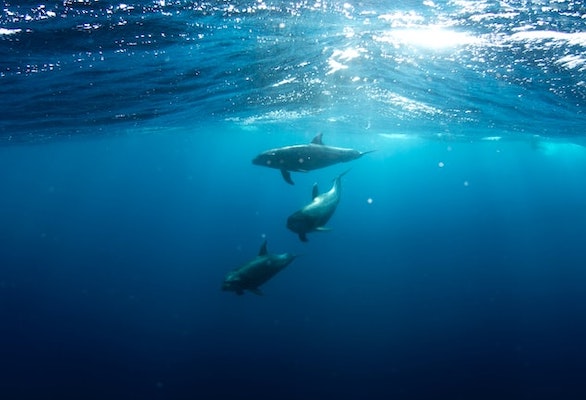
UN high seas treaty finally agreed to protect vast swathes of planet's oceans
After 15 years of disagreement, failures and stalled formal and informal talks, there is finally a UN high seas treaty that will help to protect vast swathes of the planet's oceans.
The legally binding agreement was reached after five rounds of protracted United Nations-led negotiations that ended in New York on Saturday, a day after the original deadline.
"The ship has reached the shore," UN conference president Rena Lee announced after a marathon final day of talks between negotiators from more than 100 countries.
The latest round of negotiations, the third in a year, had looked as though they may end again without success.
Delegates worked through Friday night and into Saturday, arguing over sensitive political issues like how to share newly discovered resources between developed and developing nations.
In many ways the fault lines mirrored those at the COP27 UN climate change conference in Egypt late last year, where trust and solidarity between rich and poor countries frayed close to breaking point and threatened to derail the whole event.
With this as the backdrop, getting an agreement represents a huge and potentially critical milestone in the fight against climate change.
The high seas, or the parts of the ocean that are not territorial waters, do not technically belong to anyone.
But they are colossal, making up 60% of the earth's oceans and covering nearly half its surface.
Ocean ecosystems keep our planet in balance by producing nearly half of the earth's oxygen and absorbing much of its carbon dioxide.
But they are under threat from pollution, exploitation and global warming.
The treaty places 30% of the world's land and sea under protection by the end of 2030, a target known as "30 by 30".
Economic interests were a major sticking point throughout the latest round of negotiations, with developing countries calling for a greater share of the spoils from the "blue economy", including the transfer of technology.
An agreement to share the benefits of "marine genetic resources" used in industries like biotechnology also remained an area of contention until the end.
Greenpeace says 11 million square km (4.2 million square miles) of ocean needs to be put under protection every year until 2030 to meet the target.
"Countries must formally adopt the treaty and ratify it as quickly as possible to bring it into force, and then deliver the fully protected ocean sanctuaries our planet needs," said Laura Meller, a Greenpeace oceans campaigner who attended the talks.
"The clock is still ticking to deliver 30 by 30. We have half a decade left, and we can't be complacent."
Original source: Sky News
Image credit: Talia Cohen, Unsplash
